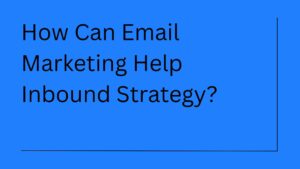In the world of ecommerce, data is your most powerful ally. The digital marketplace is highly competitive, and to grow, thrive, and stay ahead of your competitors, tracking the right metrics is essential. However, not all metrics are created equal. While you may be tempted to track every data point under the sun, it’s critical to focus on the key metrics that can truly make an impact on your business.
In this article, we will explore the most important ecommerce metrics that every business should monitor. We’ll also discuss how segmenting your data can help you gain deeper insights, and how tracking the right metrics can guide you to actionable steps for improving performance and maximizing your bottom line.
Segment Your Ecommerce Metrics (Data) for Deeper Insights
Metrics are far more valuable when segmented by specific dimensions. By breaking down your data across different factors, you can uncover patterns and discover areas of improvement that might get lost in raw averages. Segmentation allows you to see nuances that may not be immediately apparent, making your data much more actionable.
Here are some key dimensions to consider when segmenting your ecommerce data:
1. Traffic Source / Channel / Campaign
Knowing where your traffic is coming from is foundational to understanding your customer behavior. Different sources of traffic—such as organic search, paid ads, email campaigns, social media, or direct visits—can yield very different user behaviors. For instance:
Organic Search: These visitors are often in the research phase of their buying journey, looking for information about your products or services. They may not be ready to purchase right away.
Paid Ads: These users tend to have higher intent, often searching for specific products or services, and may respond quickly to targeted offers.
Email Campaigns: Returning customers or subscribers who are already familiar with your brand. These visitors are more likely to convert because of their prior engagement.
Additionally, segmenting by campaign type (e.g., seasonal promotions, flash sales, product launches) helps you track how specific marketing efforts are performing. For example, someone drawn in by a holiday sale might behave differently than a customer responding to a loyalty reward program on your ecommerce store.
2. Product Category
If your ecommerce store offers a diverse product range, it’s essential to look at metrics like conversion rates, average order value (AOV), and customer preferences by product category. By segmenting data this way, you can:
Identify High-Performing Categories: Understanding which product categories are most popular or have the highest sales can help you focus your ecommerce marketing and inventory efforts.
Address Underperforming Categories: Metrics can point you toward underperforming categories that may require targeted campaigns, merchandising strategies, or even product improvements.
3. Time
Ecommerce is inherently seasonal. Tracking performance over time can help you identify ecommerce trends that inform better decision-making. For example:
Seasonal Spikes: During certain times of the year—such as holidays or back-to-school shopping—you may see an uptick in demand. Segmenting by time will help you plan for these spikes and ensure your marketing and inventory strategies are aligned.
Weekly and Daily Trends: Customer habits may fluctuate throughout the week, so segmenting by day or week can reveal key patterns in customer behavior (e.g., higher traffic on weekends).
Longer-Term Trends: It’s also essential to track longer-term growth patterns or potential declines. Keeping an eye on these trends can help you make adjustments early if your business is stagnating or heading in the wrong direction.
4. Device Type
The device your customers are using plays a significant role in their shopping behavior. People shopping on desktops, tablets, and mobile devices may behave differently and experience your site differently. Segmenting by device type helps you:
Optimize Mobile Experience: If a significant portion of your traffic is coming from mobile devices, it’s essential to ensure that your mobile site is fully optimized. Poor mobile user experience can negatively impact your conversion rates.
Address Device-Specific Challenges: If you notice a lower conversion rate on mobile devices compared to desktop, it could be due to a clunky mobile interface, slow load times, or other issues.
Key Ecommerce Metrics to Monitor
Once you’ve segmented your data, it’s time to focus on the metrics that really matter. These metrics serve as the lifeblood of your ecommerce business, providing insights that can help you optimize your strategies for greater success. Let’s dive into the most essential ecommerce metrics every business should track:
1. Average Order Value (AOV)
AOV measures how much customers spend on average per order. It’s a simple but powerful metric that answers the question, “What does an order mean to you?” Increasing your AOV can significantly boost your revenue without having to acquire more customers. Some strategies to improve AOV include:
- Offering bundled products at a discount.
- Providing free shipping for orders over a certain threshold.
- Upselling or cross-selling related products during the checkout process.
2. Average Order Profit
While AOV tells you how much revenue you’re generating per order, average order profit takes it a step further by factoring in costs like production, shipping, and marketing. This metric helps you understand your true profitability, ensuring you’re not just generating revenue but also making money on each sale.
3. Cost Per Acquisition (CPA)
CPA reveals how much it costs you to acquire each new customer. This metric is essential for understanding the efficiency of your marketing efforts. If your CPA is higher than your profit margins, it’s time to reevaluate your campaigns. Sustainable ecommerce business models depend on a CPA that’s lower than the value each customer brings over their lifetime (Customer Lifetime Value, or CLV).
4. Conversion Rate
Your conversion rate tracks the percentage of visitors who take a desired action on your site—whether it’s making a purchase, subscribing to your newsletter, or adding items to their cart. A high conversion rate generally indicates that your site is effective at persuading visitors to act. Segmenting your conversion rate by traffic source, device, or campaign type can reveal bottlenecks in your sales funnel.
5. Return on Investment (ROI)
ROI measures the profitability of your marketing efforts. It is calculated as:
ROI = (Revenue – Costs) / Costs
This metric helps you understand whether your ecommerce marketing strategies are paying off. A positive ROI means you’re making more money than you’re spending, while a negative ROI indicates that your campaigns need optimization.
6. Customer Lifetime Value (CLV)
CLV is the total revenue a customer is expected to generate during their relationship with your business. Knowing your CLV helps you justify the costs of acquiring customers, especially if you’re using strategies like paid advertising. If you expect a customer to make multiple purchases over time, you can afford to spend more upfront to acquire them.
7. Repeat Purchase Rate
Closely related to CLV, the repeat purchase rate tracks how often customers return to make additional purchases. A high repeat purchase rate indicates strong customer loyalty and satisfaction. Improving this rate is often easier and more cost-effective than acquiring new customers, so investing in customer retention strategies is a key growth lever.
8. Revenue Per Visit (RPV)
RPV measures how much revenue each visitor to your website generates. This metric combines AOV, conversion rate, and traffic quality into a single number, making it a powerful indicator of overall site performance.
9. Customer Satisfaction Rate (CSAT) or Net Promoter Score (NPS)
These metrics gauge how happy your customers are with your products and services. A high CSAT or NPS score indicates strong customer satisfaction, which can lead to better retention rates and organic growth through word-of-mouth referrals.
10. Demographics
Understanding the demographics of your audience—such as their age, location, and income level—adds context to their shopping behaviors. This data can be used to tailor your marketing campaigns, improving targeting and personalization.
Asking the Right Ecommerce Data-related Questions to Yourself
While tracking ecommerce business metrics is essential, it’s equally important to ask the right questions to turn your data into actionable insights. Here are some questions you should consider:
Which Channels Drive the Most Revenue or Acquisitions?
- Could you identify which channels bring in the most valuable traffic and focus your marketing efforts on those?
What Are Your Best-Selling and Most Profitable Products?
- Highlight these products in promotions and inventory planning. Also, analyze why other products are underperforming and whether tweaks in pricing or marketing could help.
Which Products Are Frequently Purchased Together?
- Use this information to create bundles or recommend complementary products to customers, increasing AOV.
What Offers Drive the Most Conversions?
- Experiment with different offers—like free shipping, discounts, or limited-time deals—to see what resonates best with your audience.
What Conversion Barriers Exist?
- Analyze your sales funnel for friction points, such as complicated checkout processes or unexpected shipping costs. Remove these barriers to improve conversion rates.
What’s the Most Efficient Way to Increase Revenue by 10%?
- Whether it’s increasing traffic, improving conversion rates, or raising prices, each scenario requires a different approach. Look for the most cost-effective strategy.
Focus on Incremental Improvements to your Ecommerce Business
Unless you encounter a major issue, ecommerce optimization is typically about making small, continuous improvements. Look for incremental gains across multiple areas rather than expecting a single big breakthrough. Here’s why:
Small Wins Add Up: A series of 1% improvements across various metrics can lead to substantial growth over time.
Granular Understanding Is Key: Consistent, detailed data analysis allows you to make informed decisions that drive results.
Patience Pays Off: For newer businesses, it can take time to accumulate enough clean data. Trust the process and remain methodical.
By focusing on tracking the right metrics, segmenting your data, and asking the right questions, you can gain the insights needed to drive your ecommerce business forward.
Conclusion
Tracking the right ecommerce metrics is not a one-time task but an ongoing journey. By segmenting data, focusing on key performance indicators, and asking insightful questions, you’ll uncover actionable opportunities to grow your business. Remember, success lies in the details—from understanding your traffic sources to enhancing customer satisfaction. Combine methodical analysis with a commitment to incremental improvement, and your ecommerce business will be well-positioned to thrive.
FAQs around Ecommerce Metrics
Segmenting data allows businesses to identify patterns, uncover specific challenges, and tailor strategies for distinct customer groups or product categories.
It depends on your goals. For profitability, focus on ROI and CLV. To improve conversions, prioritize metrics like CPA and conversion rate.
Weekly tracking provides a balance between actionable insights and manageable data analysis. However, specific metrics may require daily or monthly reviews depending on their volatility.
Optimize your website’s usability, simplify checkout processes, provide trust signals, and experiment with compelling offers like free shipping or discounts.
While historical data is valuable, combine it with real-time insights to adapt to changing trends and customer behaviors.





